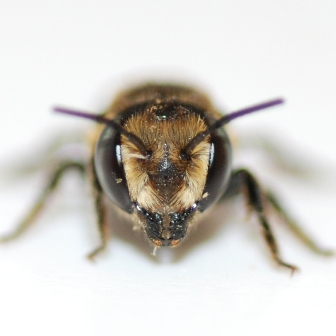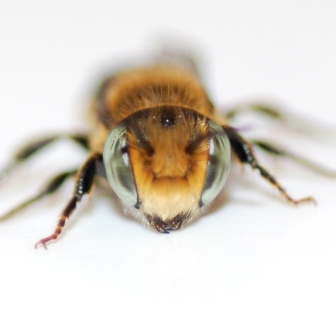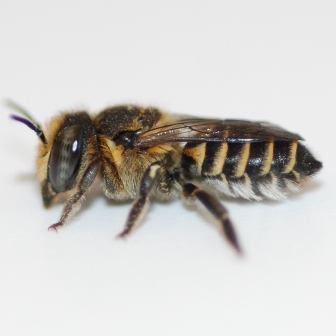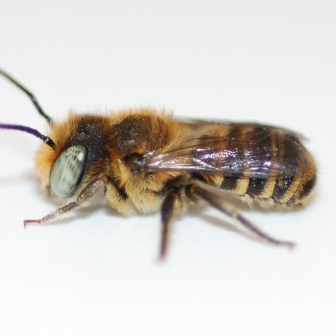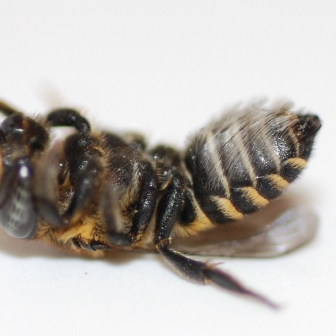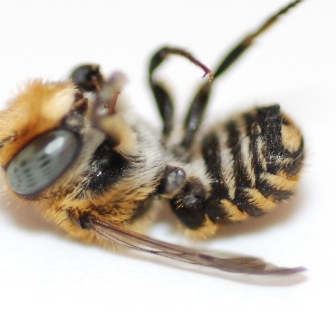Female and Male Alfalfa Leafcutting Bees:
Identification & Sex Ratio
Alfalfa leafcutting bees (ALB) (species: Megachile rotundata), like other bees, have both a female and male gender.
For producers, it can be helpful to identify females and males to get a sense of reproductive potential or to help better understand a problem should one arise, for example. Male and female ALBs may trip alfalfa flowers; however, females have been found to trip a higher percentage of flowers (78%) compared to males (51%) (1).
Gender Proportion Data
There are usually more males than females found in ALB cocoon samples, generally speaking the ratio is about 2:1. The following table shows national data of percentage female bee from samples processed at the CCTC (2010-2012). The numbers indicate averages and a range of variability.
Percentage of Tested Cocoons that Contain Female Bees | |||
Year |
Average % |
Maximum % |
Minimum % |
2012 |
33.48 |
45.28 |
17.39 |
2011 |
35.37 |
51.22 |
23.43 |
2010 |
36.90 |
54.69 |
26.12 |
3-Year Average |
35.25 |
50.39 |
22.31 |
Source: From CCTC Regional Test Results (Canada) (2010-2012)
Possible Reasons for Gender Proportion Variability
Typically, the mated female lays female eggs (fertilized) first at the back of a nest tunnel and male eggs (unfertilized) are laid later nearer the entrance of a nest tunnel. This sequence, represented in the figure below, might be expected to produce a consistent proportion of females and males. However, this order isn’t always seen in the field.

F = female
M = male
One study (2) found there may be “out-of-sequence” males for a number of reasons such as - females occasionally lay out of sequence, other females may lay in a tunnel that already has cocoons, or males may be diploid (the result of fertilized eggs that develop into males rather than females). In another study (3), it was found that with increased flight distance to resources, laying females produced a greater proportion of males, which are smaller and require less investment to produce. Although females are more frequently found at the back of the tunnel, and males at the front (near the entrance), replacement of partially-filled nests has not been found to increase female production (4). Related to this, another study (5) found that at intermediate sex ratios, the rate of harassment of females by males is highest, and a higher rate of this activity reduces the number of foraging trips by a female and reduces her rate of offspring production.
Gender identification (adult features)
Front face (anterior) view:
Female |
Male | |
Body side (lateral) view:
Female |
Male | |
Abdomen (ventral lateral) view:
Female, |
Male | |
Back top (dorsal) view:
 Female |
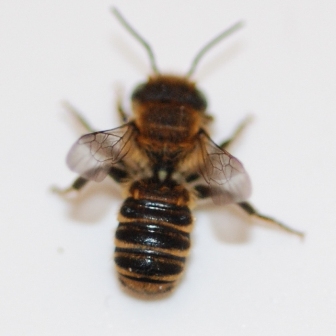 Male |
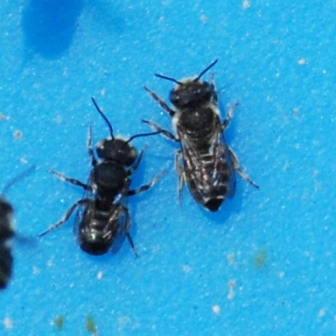 Females (right) are generally
larger than males (left) |
Other images:
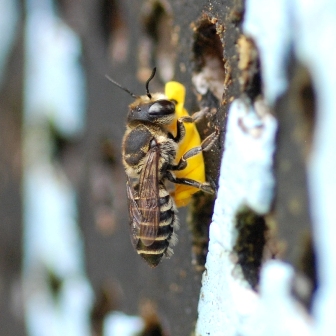 Females carry leaf or petal pieces |
 The hairs (scopa) on the ventral side of the abdomen of females can hold a significant amount of dry pollen |
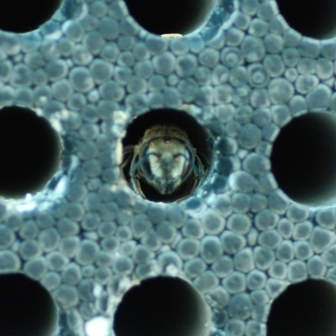 Females may be seen
in nest tunnels |
References:
1 Cane, J.H. 2002. Pollinating bees (Hymenoptera: Apiformes) of U.S. alfalfa compared to rates of pod and seed set. J. Econ. Entomol. 95: 22-27.
2 McCorquodale, D.B. and R. E. Owen. 1994. Laying sequence, diploid males, and nest usurpation in the leafcutter bee, Megachile rotundata (Hymenoptera: Megachilidae). Journal of lnsect Behavior, 7(5): 731-738.
3 Peterson, J.H. and B.D. Roitberg. 2006. Impacts of flight distance on sex ratio and resource allocation to offspring in the leafcutter bee, Megachile rotundata. Behavioral Ecology and Sociobiology, 59: 589–596.
4 Jay, S.C. and N. Mohr. 1987. The effect of nest replacement on the production of females of the alfalfa leaf-cutter bee Megachile rotundata (F.). J. Apic. Res. 26: 69-72.
5 Rossi, B.H., P. Nonacs and T.L. Pitts-Singer. 2010. Sexual harassment by males reduces female fecundity in the alfalfa leafcutting bee, Megachile rotundata. Animal Behaviour, 79: 165–171.

